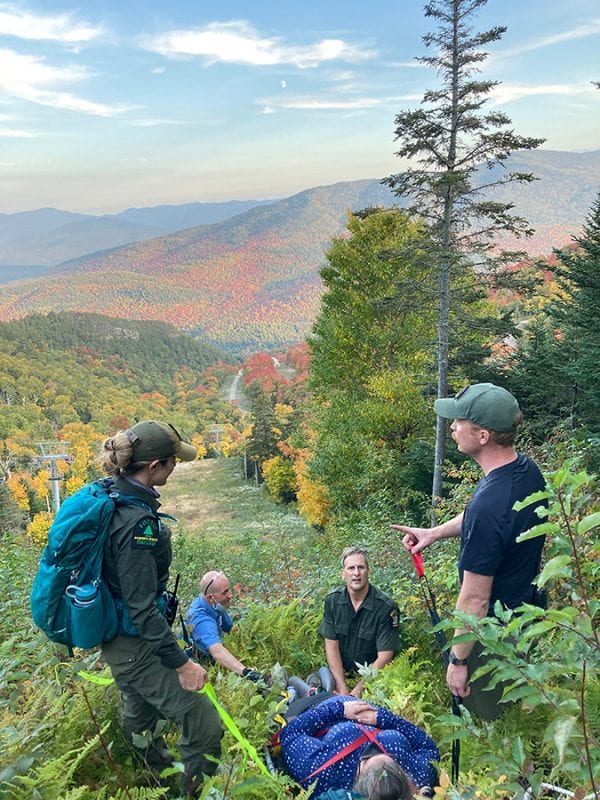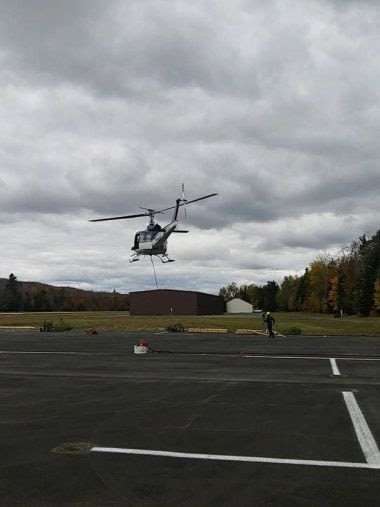For the past 8 or so years, the nonprofit conservationist organization Protect the Adirondacks has been locked in a contentious lawsuit against the New York State Department of Environmental Conservation and the Adirondack Park agency. The state Court of Appeals finally made a ruling just this past May in favor of Protect the Adirondacks. The subject that caused this much contention in the court systems was the construction of snowmobile trails. The construction of such trails did not directly contradict written elements of the New York State Constitution, though it was correctly the responsibility of the courts to interpret the spirit of the law. As such, the ultimate ruling was what was best for the conservation of Adirondack wilderness.
For reference, it is first necessary to know that Article 14 of the New York State Constitution, the “forever wild” clause, states that the Adirondack woods “shall not be leased, sold or exchanged, or be taken by any corporation, public or private, nor shall the timber thereon be sold, removed or destroyed.” In order to construct these snowmobile trails, it would be necessary to cut down a significant amount of forest. This is where the premise of the lawsuit came from, as Protect the Adirondacks argued that cutting down around 1,000 trees per mile of trail, as well as the manipulation of the land to create the slopes of the trails, violated the “forever wild” clause.
While this may seem like an obvious violation of the clause, lower courts ruled in favor of the defense on multiple occasions. The reasons were that the amount of tree cutting was less than other cases that had not been taken to court, and also vague phrasing in the original constitution specifically protected larger, healthier trees, whereas trail construction would harm mostly smaller trees. The specific wording of this clause of the constitution is exceptionally vague, and so it is hard to find any concrete evidence against the construction of such trails or to point out any specific violations.
However, as is the case with many old documents, it would be impossible for those who wrote the originals to anticipate problems centuries into the future. The construction of these trails certainly violates the spirit of the “forever wild” clause. The clause was written for a reason, and so rather than finding loopholes in old wording, it should be our responsibility to maintain the purpose of the laws in the first place. Even with relatively vague wording, it is also abundantly clear that trail construction contradicts this clause.
The final decision of the Court of Appeals was that regardless of the size of individual trees, cutting down that much forest would have significant negative impacts on the ecosystem without immediately benefiting the general public. Old documents ultimately need to be interpreted through a modern lens. A lot is possible when taking advantage of strange wording. Also, the argument that past cases, with worse violations, had not been taken to court seems illogical since we cannot correct for those mistakes. Regardless, the final decision was the right one, and it’s quite frankly a little bit discouraging that it took so long to come to.
Works Cited
“Article 14 Lawsuit Update.” Protect the Adirondacks!, 25 Apr. 2021, https://www.protectadks.org/article-14-lawsuit-update/
Cerbone, Aaron. “New York’s Highest Court Rules against Dec Tree Cutting.” New York’s Highest Court Rules against DEC Tree Cutting | News, Sports, Jobs – Adirondack Daily Enterprise, https://www.adirondackdailyenterprise.com/news/local-news/2021/05/nys-highest-court-rules-against-dec-tree-cutting-restricting-future-trail-work/ .







